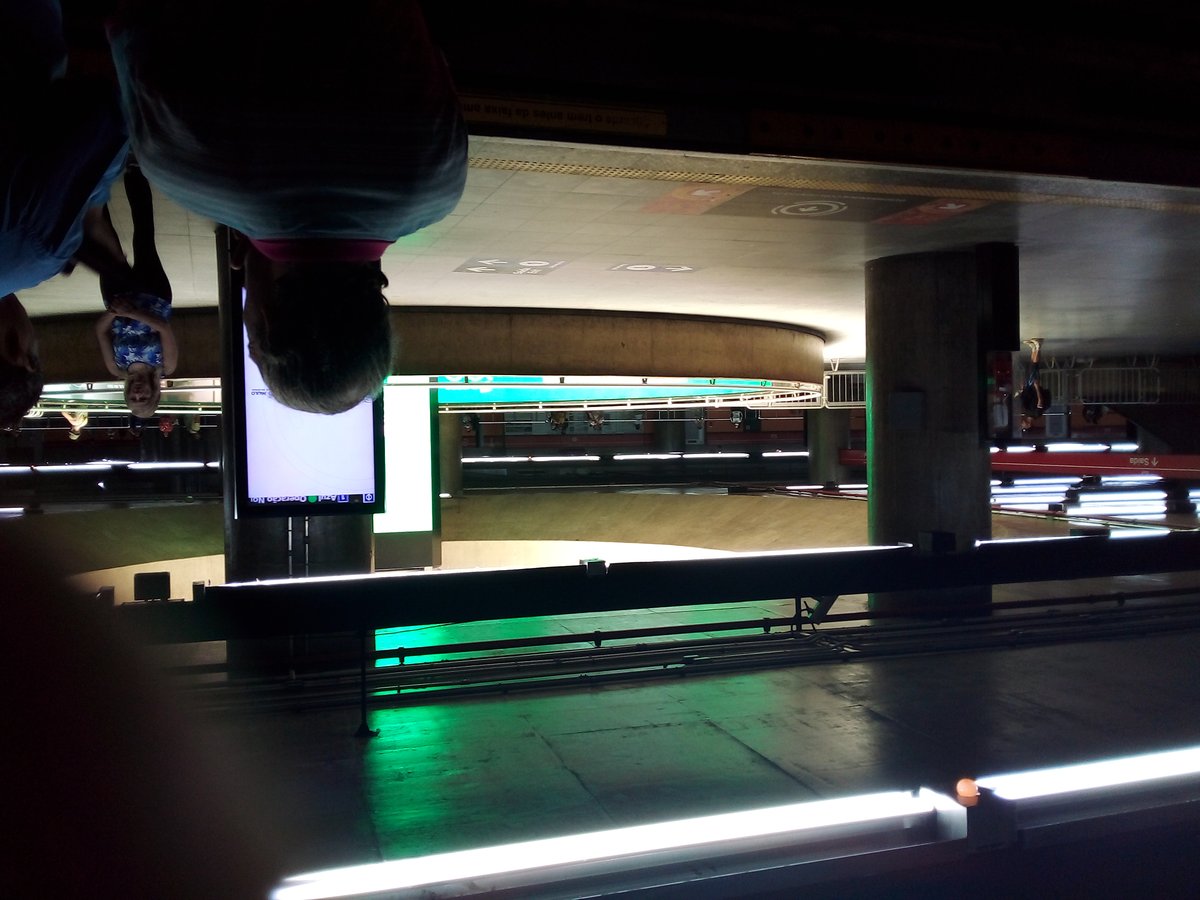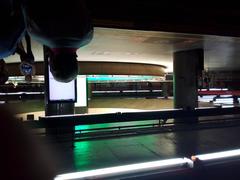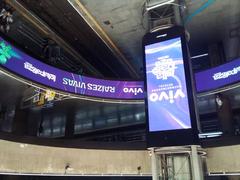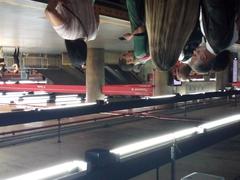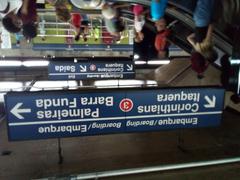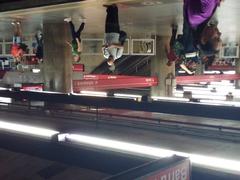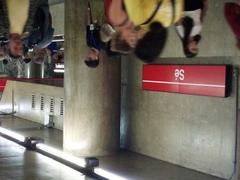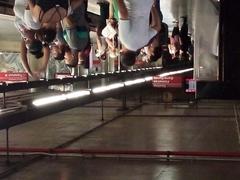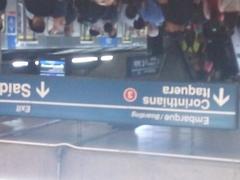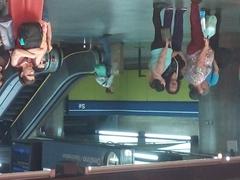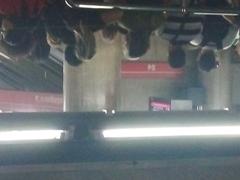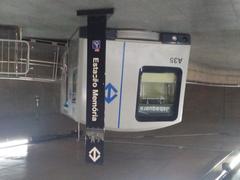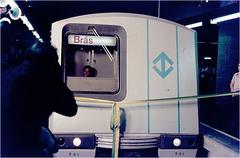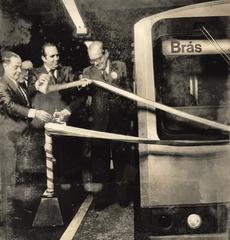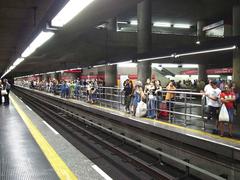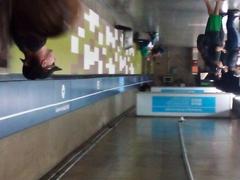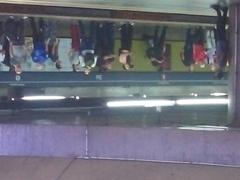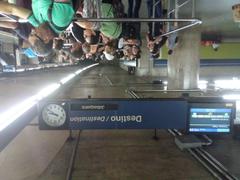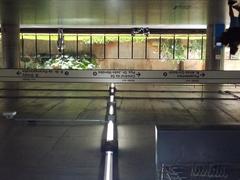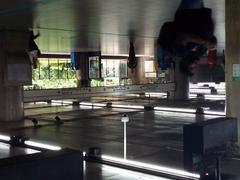Visiting Sé São Paulo, Brazil: Guide, Tickets, Hours, and Tips
Date: 14/06/2025
Introduction
Sé, located at the heart of São Paulo, Brazil, is a district steeped in history, culture, and architectural splendor. Its crown jewel, the São Paulo Cathedral (Catedral da Sé), stands as both a spiritual symbol and a testament to the city’s evolution from colonial outpost to modern metropolis. This comprehensive guide equips visitors with historical context, practical details—like opening hours and ticket information—travel tips, safety advice, and recommendations for exploring Sé’s surrounding attractions and vibrant neighborhoods (Nomadic Matt; Wikipedia: São Paulo Cathedral; Audiala).
Table of Contents
- Introduction
- Historical Evolution of Sé
- São Paulo Cathedral (Catedral da Sé)
- Praça da Sé: The Civic Heart
- Multicultural Influences
- Visitor Information
- Nearby Landmarks and Attractions
- Safety Tips and Practical Advice
- Essential Local Insights
- Frequently Asked Questions (FAQ)
- Conclusion and Final Tips
- References
Historical Evolution of Sé
Origins and Early Development
Sé traces its roots to the Jesuit mission founded in 1554 by Manuel da Nóbrega and José de Anchieta, who established São Paulo atop a plateau for strategic defense and access to trade. The area quickly became the nucleus of the growing settlement, with the first parish church completed by 1616 (Nomadic Matt). Over the centuries, the church evolved from modest beginnings to a Baroque cathedral, symbolizing the city’s central religious and civic role (Wikipedia: São Paulo Cathedral).
Sé as a Civic and Political Hub
In the 19th and 20th centuries, Sé transformed into São Paulo’s civic heart, driven by the city’s coffee-fueled economic boom. Praça da Sé became “ground zero” for São Paulo, the point from which city distances are measured and a stage for major historical events, including the Diretas Já movement for democratic elections in the 1980s (Wikipedia: Praça da Sé). Early 20th-century urban renewal shaped its current layout and architectural identity.
São Paulo Cathedral (Catedral da Sé)
Construction and Design
The current cathedral is a monumental neo-Gothic structure designed by German architect Maximilian Emil Hehl. Initiated in 1913, construction was delayed by world events and economic hardship before its inauguration in 1954, marking São Paulo’s 400th anniversary (Wikipedia: São Paulo Cathedral; Audiala). The 111-meter-long church, with 92-meter twin towers and a Renaissance-inspired dome, features a five-aisled Latin cross plan, over 800 tons of Brazilian marble, and interior motifs depicting local flora and fauna.
Restoration and Preservation
A major restoration from 2000 to 2002 revitalized the cathedral, restoring lost neo-Gothic details, completing unfinished elements, and modernizing facilities (Audiala). The project drew on original architectural plans to ensure historical accuracy.
Spiritual and Cultural Importance
Serving as the seat of the Roman Catholic Archdiocese of São Paulo, the cathedral is a focal point for religious ceremonies, civic gatherings, and cultural events. The crypt beneath the altar holds the remains of bishops and São Paulo’s indigenous founder, Chief Tibiriçá (Discover Walks). The cathedral’s capacity of 8,000 people makes it one of the world’s largest neo-Gothic churches (SouthAmerica.travel).
Praça da Sé: The Civic Heart
Urban Landscape and Social Movements
Praça da Sé is both the city’s geographic center and a vibrant communal space, surrounded by historic architecture and filled with gardens, public art, and bustling street life (Wikipedia: Praça da Sé). The square is a microcosm of São Paulo’s diversity and a site for political rallies, festivals, and performances.
Multicultural Influences
A Tapestry of Cultures
Sé reflects São Paulo’s multicultural heritage, shaped by waves of immigration from Italy, Japan, Portugal, and the Middle East (Nomadic Matt). The cathedral’s stained glass, crafted by Italian immigrants, and the use of regional materials highlight this blend of global and local influences (Discover Walks).
Cultural Events and Neighborhoods
Cultural activities abound, from concerts inside the cathedral to lively festivals in nearby neighborhoods like Liberdade—home to the largest Japanese community outside Japan—and Bela Vista, known for Italian traditions (SouthAmerica.travel).
Visitor Information
Cathedral Hours, Tickets, and Tours
- Opening Hours: Daily, 7:00 AM – 7:00 PM. Confirm on the official site for special events or holidays.
- Admission: Free. Tickets may be required for guided tours, the crypt, or bell tower.
- Guided Tours: Available in multiple languages. Book through the Audiala app or at tourist centers.
- Mass Times: Monday–Saturday at 12:00, Sundays at 9:00, 11:00, and 16:00.
- Accessibility: Ramps and elevators available; the area is pedestrian-friendly but can be crowded.
Getting There
Sé is easily reached by public transport, especially via the Sé Metro Station (Lines 1 and 3). Walking is ideal for exploring the district’s sites (Go Ask a Local).
Nearby Landmarks and Attractions
- Pátio do Colégio: Birthplace of São Paulo, with a museum and reconstructed colonial church (Pátio do Colégio).
- Municipal Theater: Art Nouveau opera house offering guided tours (Municipal Theater).
- São Paulo Stock Exchange (B3): Modernist architecture, external visits recommended (B3).
- Luz Station and Museum of the Portuguese Language: Railway hub and interactive museum (Estação da Luz).
- Rua 25 de Março: Bustling street market.
- Mercadão (Municipal Market): Culinary hotspot for local delicacies.
- Liberdade: Experience Japanese culture, cuisine, and festivals (Liberdade).
- Bela Vista and Bom Retiro: Italian and multicultural neighborhoods.
- Ibirapuera Park: São Paulo’s largest green space.
- Beco do Batman: Street art alley in Vila Madalena.
- Avenida Paulista: Sunday pedestrian zone with shops and street performances (MASP).
Safety Tips and Practical Advice
- Stay alert to pickpocketing in crowded areas like Praça da Sé and Rua 25 de Março (The Broke Backpacker).
- Carry minimal valuables and use money belts or neck pouches.
- Avoid poorly lit or deserted areas after dark.
- Use official taxis or ride-hailing apps for longer trips or night travel (Natalija Ugrina).
- Emergency numbers: Police 190, Medical 192.
Essential Local Insights
- Language: Portuguese is primary; basic phrases or translation apps are helpful (Go Ask a Local).
- Payment: Credit cards are widely accepted, but carry some cash for markets.
- Weather: Best visited March–May and August–November for mild temperatures (Touropia).
- Tipping: 10% service charge usually included.
- Dress: Casual but modest, especially in churches.
Frequently Asked Questions (FAQ)
Q: What are the visiting hours for the São Paulo Cathedral?
A: Daily, 7:00 AM–7:00 PM; check for special events.
Q: Is there an entrance fee?
A: Entry is free; tours/crypt access may require tickets.
Q: Are guided tours available?
A: Yes, book via the Audiala app or onsite.
Q: Is Sé safe for tourists?
A: Yes, with standard urban precautions.
Q: How do I get to Sé?
A: By metro to Sé station; also accessible by bus and taxi.
Q: Can I take photos inside the cathedral?
A: Allowed in most areas; avoid flash and be respectful during services.
Conclusion and Final Tips
Visiting Sé provides a window into São Paulo’s deep-rooted history, multicultural vibrancy, and architectural grandeur. The São Paulo Cathedral and Praça da Sé are just the starting points—expand your visit with nearby landmarks, culinary adventures, and cultural events. Prioritize safety, plan with up-to-date resources, and immerse yourself in the local atmosphere for a rewarding journey.
For interactive maps, self-guided audio tours, and the latest travel updates, download the Audiala app and connect with our community on social media. Enjoy discovering the essence of São Paulo in Sé!
References
- Visiting São Paulo Cathedral and Praça da Sé: History, Tickets, Hours, and Travel Tips, 2025, Audiala (https://audiala.com/en/brazil/sao-paulo/sao-paulo-cathedral)
- Catedral da Sé São Paulo: Visiting Hours, Tickets, and Historical Significance, 2025, Audiala (https://audiala.com/en/brazil/sao-paulo/sao-paulo-cathedral)
- Sé São Paulo: Visiting Hours, Tickets, and Top Historical Sites to Explore, 2025, SouthAmerica.travel (https://www.southamerica.travel/brazil/news/what-to-do-in-sao-paulo)
- Sé São Paulo Visiting Hours, Tickets & Practical Visitor Tips, 2025, The Broke Backpacker (https://www.thebrokebackpacker.com/is-sao-paulo-safe/)
- Nomadic Matt Brazil Travel Tips, 2024, Nomadic Matt (https://www.nomadicmatt.com/travel-guides/brazil-travel-tips/sao-paulo/)
- Wikipedia: São Paulo Cathedral, 2024, Wikipedia (https://en.wikipedia.org/wiki/S%C3%A3o_Paulo_Cathedral)
- Wikipedia: Praça da Sé, 2024, Wikipedia (https://en.wikipedia.org/wiki/Pra%C3%A7a_da_S%C3%A9)
- Discover Walks: 10 Interesting Facts About São Paulo Cathedral, 2024, Discover Walks (https://www.discoverwalks.com/blog/history/10-interesting-facts-about-sao-paulo-cathedral/)
- Eventbrite Audio Tour São Paulo, 2024, Eventbrite (https://www.eventbrite.co.uk/e/sao-paulo-audio-tour-a-journey-through-historic-se-tickets-1380809992859)
